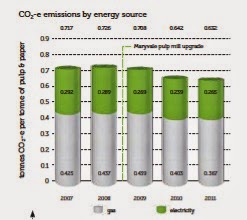Case Study: Setting greenhouse targets
Dubbo Motor Mechanic and Panel Beaters has set a target to reduce its greenhouse gas emissions by 10% over 3 years and has not been successful. To achieve this it has embarked on a green purchasing policy but only in the administration area. It wants to set a new target as it believes the target is unachievable.
Task: What ideas can you implement to convince the organisation to keep the target and assist in achieving the target?
“When we burn fossil fuels
like coal and petroleum gas, carbon dioxide and other gases are released into
the atmosphere. These emissions trap heat close to the earth, causing what is
known as the ‘greenhouse effect’. If we all work together to drive less,
conserve electricity and create less waste, we can reduce our carbon footprint
and help fight global warming.” (WikiHow,
2014).
In order for Dubbo Motor
Mechanics to reduce their greenhouse gas emissions by 10%, over a 3-year
period, they must firstly figure out how big their carbon footprint currently
is. By using a free carbon footprint calculator, a number of factors will be
taken into account to calculate exactly how much carbon they are currently
using.
Once this is established,
they must then look for ways to make it smaller. Keeping in mind to reflect on
the areas that need improvement and those to help in their long-term changes.
Remember, even small changes will add up in making big differences.
Below is a list of changes
that could help Dubbo Motors see s reduction in their greenhouse gas emission
use.
·
Turn off lights and appliances. Rely
on natural light during the day. And Shut down computers at night.
·
Unplug appliances when they are not
being used. Even the kettle in the staff room will use up power if left plugged
in.
·
Use energy saving appliances and
globes. Large appliances are responsible for a big portion of energy use.
Energy saving models will help to reduce the cost of running them i.e.
- Refrigerator
- Microwave
- Air
conditioner in the office
·
Look at how your air conditioner is
being used
- Adjust
the thermostat to 20˚C in Winter and 25˚C in Summer
·
Limit the use of hot water. Your hot
water can also be limited by turning the water heater to 48˚C, so the water
never get unnecessarily hot.
·
Mop the workshop floor, rather than
hosing it.
·
Use drip trays to catch liquids and
contain and clean up oil and chemical spills as soon as they occur.
·
Store oils, chemicals, paints and
solvents in areas that will not allow spill to escape to the environment
·
Regularly check that the containers
are not leaking.
·
Never dispose of chemicals into
storm water drains
·
Separate different kinds of waste
for easy collections and recycling.
·
Use a damp cloth, mist spray or
vacuum device to clean brakes – not compressed air
·
Never modify or tamper with vehicle
emission systems
·
Conduct all work inside the workshop
to limit noise emissions
·
Maintain equipment, such as air
compressors, to prevent noise.
·
Recycle waste
- Metals
such as lead, copper and steel, which should be stored in a secure container
for collection by a metal recycler.
- Oil
filters, which should be drained and then crushed.
- Car
batteries, which are classified as a ‘hazardous waste’ and should be collected
by a licensed contractor.
- Tyres,
which should be stored in a manner to reduce risk of fires.
These points are designed to
help Dubbo Motor Mechanics to:
·
Understand the environmental risks
and responsibilities associated with automotive servicing and repairs.
·
Take action to improve the
environmental management of their operations.
·
Take advantage of the benefits that
result from improved environmental practices.
References:
Environmental Action for
Automotive Servicing and Repairs. Retrieved from http://www.epa.nsw.gov.au/resources/clm/200877_Auto_ServiceRepair.pdf
WikiHow,
(2014). How to Reduce Your Greenhouse Gas Emissions, accessed 30th
October, 2014, from http://www.wikihow.com/Reduce-Your-Greenhouse-Gas-Emissions

















